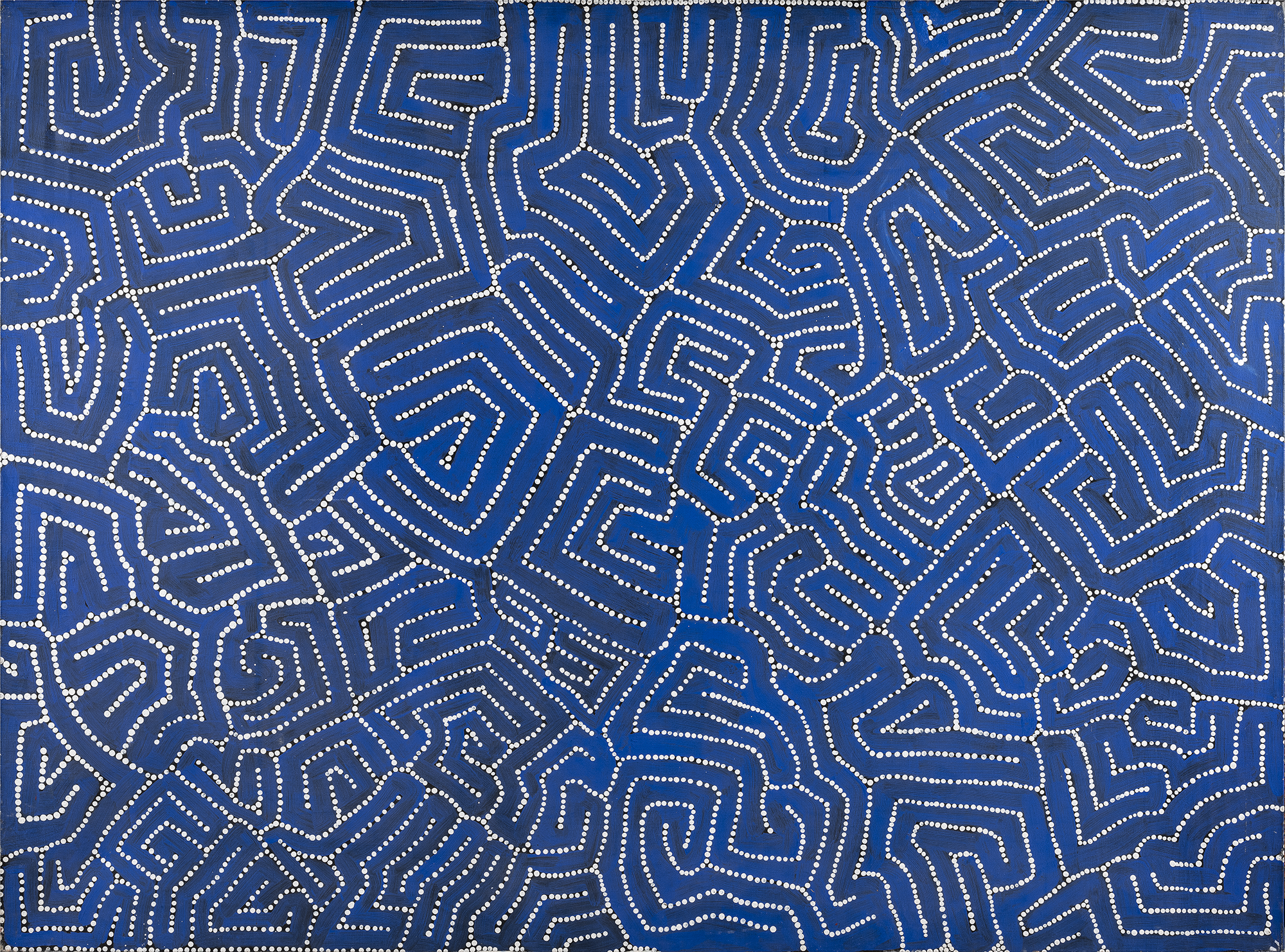Contemporary Aboriginal Art
Australian Aboriginal art and culture is the oldest continuous art tradition on the planet. In the last century it has also emerged as one of the world’s most important contemporary art movements.
Whether on bark, canvas or in new media, Aboriginal artists have used art to express the power and beauty of their culture, across cultures: to show their enduring connection to, and responsibility for, ancestral lands and the continuity of their identities and beliefs.
Dreaming
The Dreaming or Everywhen is a dimension that runs parallel to the measurable dimension of time as human beings can understand it. “Dreaming” is an inadequate rendering of an essentially untranslatable concept, which in the many Aboriginal languages has different names. The Dreaming is not only past, but is still ongoing. Dreamings have little or nothing to do with nocturnal dreams. During the Dreaming, everything – landscape, people, animals – was brought into creation by the ancestral beings. During their journeys they created all living things, plants, animals, people, but also the natural elements, water, fire, air, and the heavenly bodies. These ancestral creatures of creation left traces. These traces, prints or body metamorphoses, are still visible and legible in the landscape for the initiated. The sacred places or sites where these signs occur are also of great importance to today’s First Nations people. The journeys that the ancestral beings undertook in the Dreaming, the journeys they experienced, the things they did and the ancestral beings themselves are called Dreamings (Jukurrpa in the Warlpiri language of Central Australia or Ngarranggarni in the Gija language of the Kimberley region). These Dreamings are also the main subjects of art in traditional Aboriginal society. These stories are evoked in ceremonies during which the story is performed, sung and told. Contemporary artworks from remote regions are also based on these stories.
Culture
Culture is intrinsically linked with art and contemporary art practices play an essential role in the maintenance of culture. Fundamental to culture, art, law and knowledge of the land are elemental creation stories known as Dreamings. These stories, from the Djan’kawu and Wawilak stories for Arnhem Land, the Tingari cycle cosmology for large tracts of desert country in Western and Central Australia, the journey of the Seven Sisters in the Western Desert to the deeds of the Rainbow Serpent in the Kimberley, coalesce the ancestral past and contemporary times for several regions throughout Australia. In contemporary times art has acquired another dimension adjacent to the ceremonial arena; that of sharing knowledge and fostering understanding in order to position and perpetuate culture in a globalised world.
